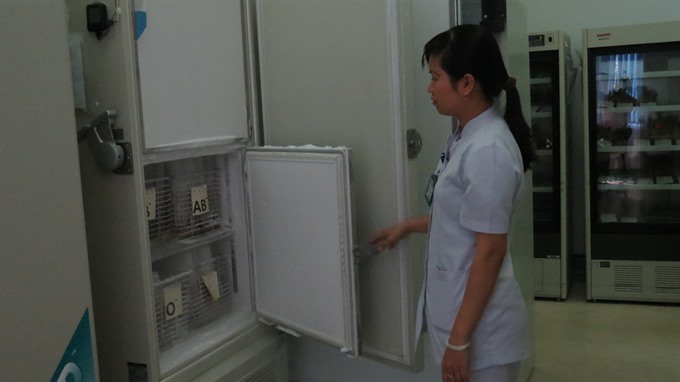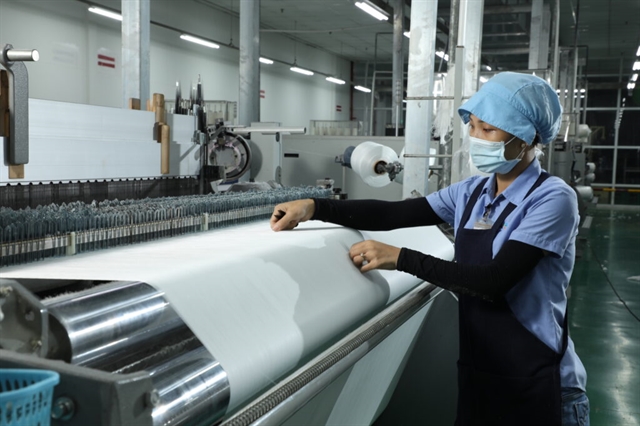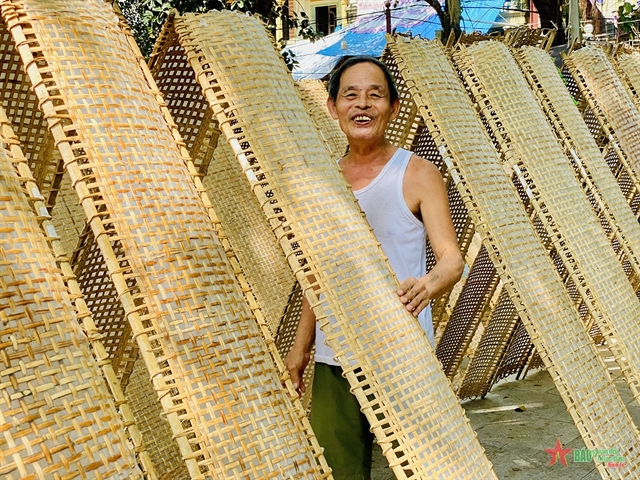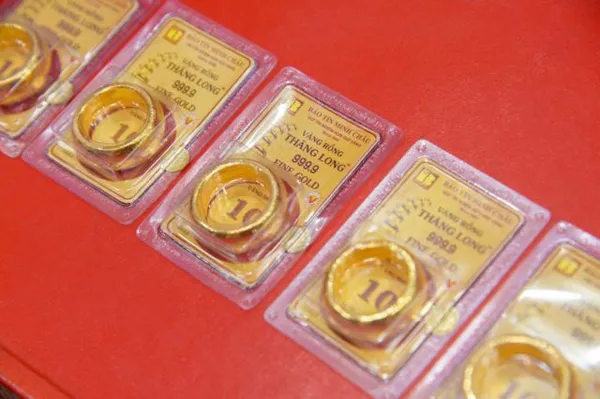 Society
Society

" />A 40-year-old patient with aortic aneurism in the emergency ward at HCM City’s Chợ Rẫy Hospital needed a lot of blood, but the hospital did not have enough.
 |
| Red blood cells are frozen and stored at HCM City’s Blood Transfusion and Hematology Hospital. —VNS.Photo.Gia Lộc |
Gia Lộc
HCM CITY — A 40-year-old patient with aortic aneurism in the emergency ward at HCM City’s Chợ Rẫy Hospital needed a lot of blood, but the hospital did not have enough.
Her blood was the rare O negative (O-) type.
Chợ Rẫy doctors contacted the Blood Transfusion and Hematology Hospital to ask for blood, and thanks to its timely supply the patient was saved.
The technique of freezing red blood cells at minus 80 degrees Celsius by the blood bank, which helps store blood for 10 years, frequently helps save patients with rare blood types.
According to Phù Chí Dũng, its head, it is the city’s only facility to successfully adopt this technique.
Since beginning to use it in 2013 it has supplied 230 frozen packages of blood.
How it is done
After getting blood from voluntary donors, red blood cells are separated and mixed with glycerol, which enables preservation for 10 years, Dũng said.
“When we need these red blood cells, they are defrosted and the glycerol is removed.”
He said these days the individual components of blood rather than blood which are transfused depending on a patient’s need.
Without this technique, red blood cells are stored for 28 to 42 days at 2-6 degrees Celsius.
The hospital tested the new technique of freezing red blood cells on 26 patients at several city hospitals. The results showed that 90 per cent of them had haemoglobin rising to the required level.
“There are no reactions and complications after transfusion,” Dũng said.
The success achieved in freezing red blood cells plays an important role in treatment, he said.
“Often we and doctors at other hospitals cannot find donors with rare blood types during an emergency. Though the hospital has a list of 160 people with rare types of blood, the demand still cannot be met.”
He and his colleagues at the hospital pondered over how to store rare blood types for longer, and read literature on the internet and learnt from American doctors.
From 2005 they carried out clinical trials until establishing the efficacy of the technique in local conditions.
Now the blood bank has 400 packages of 250-450ml of rare types of blood like A negative, B negative, O negative, and AB negative.
It aims to increase the number to 500 by 2020.
To enable this, the Red Cross has called on people with rare blood types in the country to donate.
The ratio of people in Việt Nam with the rare Rh-negative blood types is 0.04-0.07 per cent, lower than in other countries.
The Red Cross is also calling on companies to encourage their foreign workers to donate blood because the rates in many other countries are higher, with 15-40 per cent of their population having rare blood types.
According to Dũng, people with rare blood types can come to the hospital to store their blood in case of possible treatment in future.
A woman with a rare blood type who is found to have uterine fibroid, for instance, would have surgery to remove the fibroid or the entire uterus in the next two or three months, and could store her blood for use then since she could lose blood during the procedure and need transfusion, he said.
Storing frozen red blood cells costs much more than storing blood normally, and patients have to pay extra when they get blood.
Dũng suggested that health insurance should also cover the cost of frozen red blood cells.
The hospital’s doctors are ready to provide training in using the technique to other health facilities. —VNS









